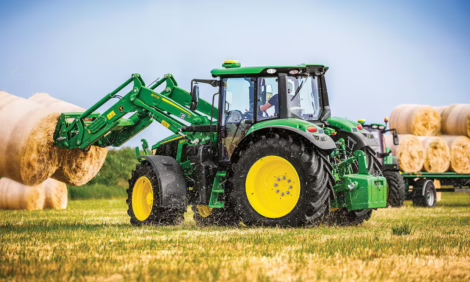



Deadly swine disease outbreak at buying station triggers search for mystery pathogen
When a call came into the office last September reporting very high, unexplained sow mortalities, Daniel Gascho, DVM, didn’t expect it to be anything unusual. But when the veterinarian with Four Star Veterinary Service in Mexico, Indiana, went to investigate, he found quite the opposite.The site was a Midwest buying station with cull sows and boars collected for market. At first, just a few sows died, and alarms weren’t raised. Cull markets and buying stations are inherently at a higher risk for diseases, Gascho said.
But then 1,000 roaster pigs were unloaded at the station and they started dying, raising serious alarms.
“We had high-health, 50-pound pigs coming onto the site with no clinical signs of disease, and within 48 to 72 hours, half of them had died,” Gascho said. “It was worse than anything I’ve ever seen for an infectious disease, considering how fast they were affected after exposure. At this point we were ruling out toxin, ventilation failure or something along those lines. If infectious, it almost had to be something we were not familiar with in this country.”
Getting a diagnosis
Gascho reported the event to the proper authorities and sent off tissue samples to Iowa State University Diagnostic Laboratory for a diagnostic work-up. Worried it could be a foreign animal disease, he was relieved to have African swine fever (AFS) and similar diseases ruled out right away.
While they waited for a positive diagnosis, the buying station implemented biosecurity and depopulating protocols for the facility.
But it took a week to receive a diagnosis. “Unfortunately, most of the rapid tests we have available are for specific pathogens, so there were a lot of negatives before something was found,” Gascho explained.
The culprit: S. zooepidemicus
After ruling out many different things, the test results came back suggesting the mortality could be due to bacterial sepsis caused by Streptococcus equi ssp. zooepidemicus (S. zooepidemicus). This was the first diagnosis of S. zooepidemicus-associated mortality in pigs in the US.
Fortunately, S. zooepidemicus is typically highly treatable and susceptible to many readily available medications. But at buying stations, pigs are heading directly to market and cannot be medicated just before slaughter, in order to meet withdrawal requirements. This created perfect conditions for the bacteria to flare up at the site.
The buying station started what is known as a “rolling depopulation” as soon as ASF and other foreign animal diseases were ruled out. Once they knew the culprit was S. zooepidemicus, they moved ahead with a rolling depopulation that included emptying pens, setting biosecurity lines and disinfecting pens before new animals moved in.
“The disease appears to spread very rapidly by direct animal contact and through fomites and the environment, but poorly by aerosolization or through the air,” Gascho said. “We never had that barn completely empty but maintained a buffer zone of several disinfected empty pens between pens that had not yet been emptied and cleaned and the recently disinfected pens. The disease did not spread. We depopulated pen by pen until all pens were emptied and cleaned.”
Disease spread
How did this disease get into the US? One possible route is from Canada. The pathogen was found in cull sows in western Canada during May 2019. A year earlier, an outbreak of S. zooepidemicus occurred in mares, also in western Canada. The disease is most commonly found in horses; however, it can be transmitted to other animals and humans, but rarely.
“The natural suspicion is that this highly pathogenic form of the bacteria came into [the US] by Canada because a lot of their cull sows are brought here,” Gascho said.
After the disease hit the buying station, other episodes of excess cull sow and finisher mortalities occurred at slaughter facilities in Wisconsin, North Carolina, Florida and other states. Authorities believe the episodes were epidemiologically linked and are unlikely to represent new outbreaks. By late October, mortality rates at these facilities had returned to normal.
Wake-up call
Even though S. zooepidemicus is now in the US, Gascho doesn’t believe it poses a major problem for our swine industry.
“It’s very treatable, but you need to catch it fast,” he added. “If it’s a weekend and someone’s not around to check a nursery or finisher as often as they should, within a few hours a lot of damage can occur quickly.”
The S. zooepidemicus outbreak is a peek at what could happen with a major foreign animal-disease outbreak.
“It raised awareness to our shortcomings on our ability to control disease and how the steps we have in place to prevent these situations don’t always go as planned,” Gascho said. “I sent in the information and it took a week to get a diagnosis, simply because we’re limited to looking for what we know is out there. New things result in new challenges.
“It’s a good wake-up call if we were to get a foreign animal disease in this country,” he concluded.








